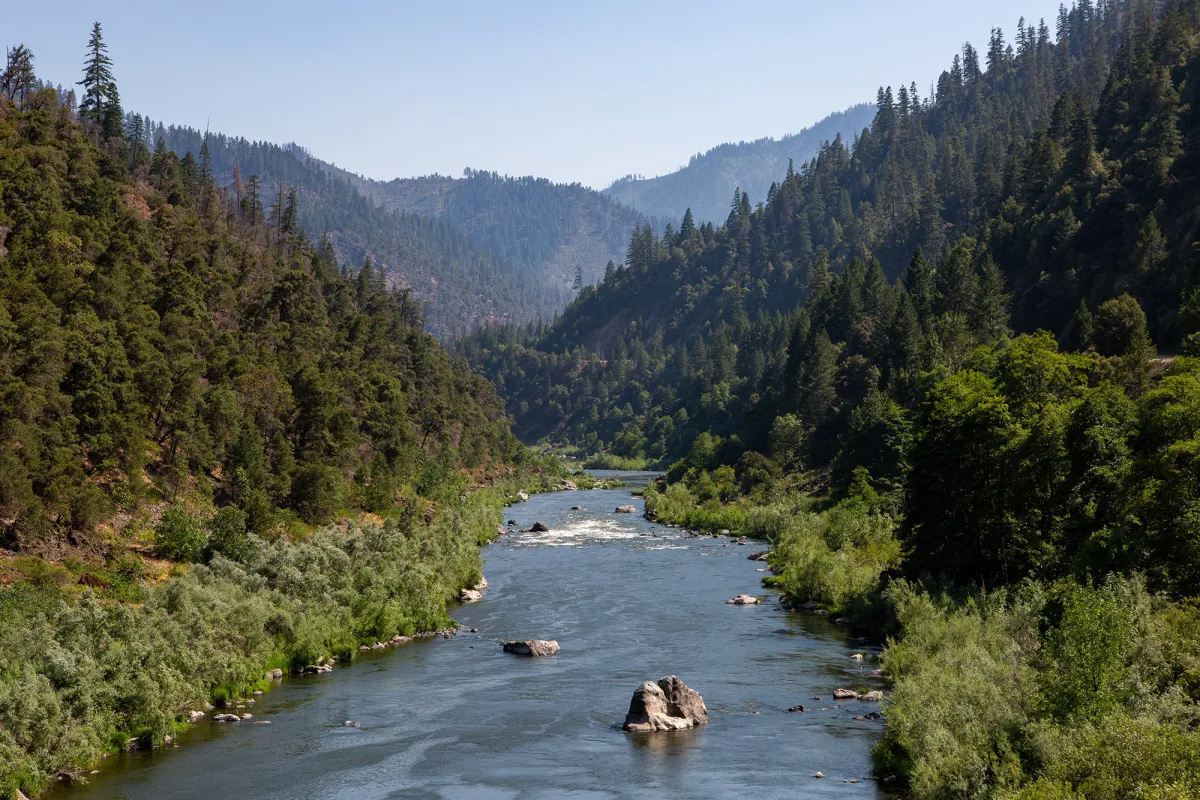
Walters: A century later, salmon spawn again in Klamath River after dams removed
Sixty years ago, I was a reporter for the Klamath Falls (Oregon) Herald and News and with my family lived in a small house on the Link River, which flows out of Upper Klamath Lake, draining a large portion of the Cascade mountain range.
Link River, just 1.5 miles long, is the beginning of the Klamath River, which meanders through 257 miles of sparsely populated, mountainous land in Southern Oregon and Northern California before flowing into the Pacific Ocean.
Although situated on the edge of downtown Klamath Falls, the Link River was, and probably still is, a little patch of semi-wilderness, teeming with wildlife such as huge pelicans which patrol its waters in search of food.
At the time, Upper Klamath Lake and the Klamath River were primarily seen locally as sources of water for expansion of the Klamath Basin’s agricultural industry, particularly alfalfa and potatoes.
One of my assignments was to cover the expansion of the basin’s irrigation system that Oregon’s two U.S. senators, Democrats Wayne Morse and Maurine Neuberger, were sponsoring in Washington.
Although Upper Klamath Lake was known for unusually huge rainbow trout, some two feet long, that attracted anglers in droves, little thought was given to the Chinook salmon that had once thrived in the Klamath River but were no longer seen so far upstream.
In the early 20th Century, the California Oregon Power Company, a locally owned utility that provided electricity to Southern Oregon and a slice of Northern California, had erected four hydropower dams on the Klamath that blocked upstream salmon spawning.
COPCO, as the utility was known, and its dams were eventually absorbed into Pacific Power and Light Co., which even later became Pacificorp and was acquired by billionaire Warren Buffett’s Berkshire Hathaway holding company.
As the dams aged, their federal operating licenses expired and environmental groups and American Indian tribes living along the Klamath’s banks served notice that they would oppose re-licensing and demand that the dams be demolished to restore salmon runs.
Their cause drew political support in California and Oregon, and when Buffett’s pal, actor Arnold Schwarzenegger, became California’s governor two decades ago, he placed $250 million in a state water bond issue to finance about half the cost of removing the dams.
Why should California’s taxpayers help Buffett get rid of dams that probably could not be relicensed anyway?
The unofficial rationale advanced by Schwarzenegger aides was that restoring the Klamath’s salmon runs would make it easier, politically speaking, for California to divert water from the Sacramento-San Joaquin Delta via canal or tunnel, which would probably reduce Sacramento River salmon runs.
Whatever underlying motives there might have been, California’s $250 million commitment made a two-state, public-private deal on dam removal possible in 2020, and after four years of deconstruction the removal project was completed a few weeks ago.
Meanwhile, however, there’s a running battle between water officials and farmers and ranchers in the Klamath Basin and along the river in California over diversions for irrigation that remains unresolved.
Related Articles
Williams: Concrete, the world’s second-most used material, needs a makeover
The world promised to tame methane. Emissions are still rising
California is about to change fuel standards. That means higher gas prices. But how high?
Election 2024: Local environmental measures could bring big changes to California
Washington governor OKs massive new wind farm and urges swift turbine approvals
Although an initial planting of young salmon to restore the Klamath runs failed, two weeks ago officials announced that one salmon was observed swimming upriver past the dam sites and into Oregon’s Spencer Creek and later others in a California creek.
The Klamath River was once the West Coast’s third most productive salmon fishery, and if the runs are restored after a century, as the sightings indicate, it’s very good news, notwithstanding reservations about California’s financial role.
I wonder whether salmon will once again traverse Link River and wriggle their way over the rapids that gave Klamath Falls its name and into Upper Klamath Lake.
Dan Walters is a CalMatters columnist.


